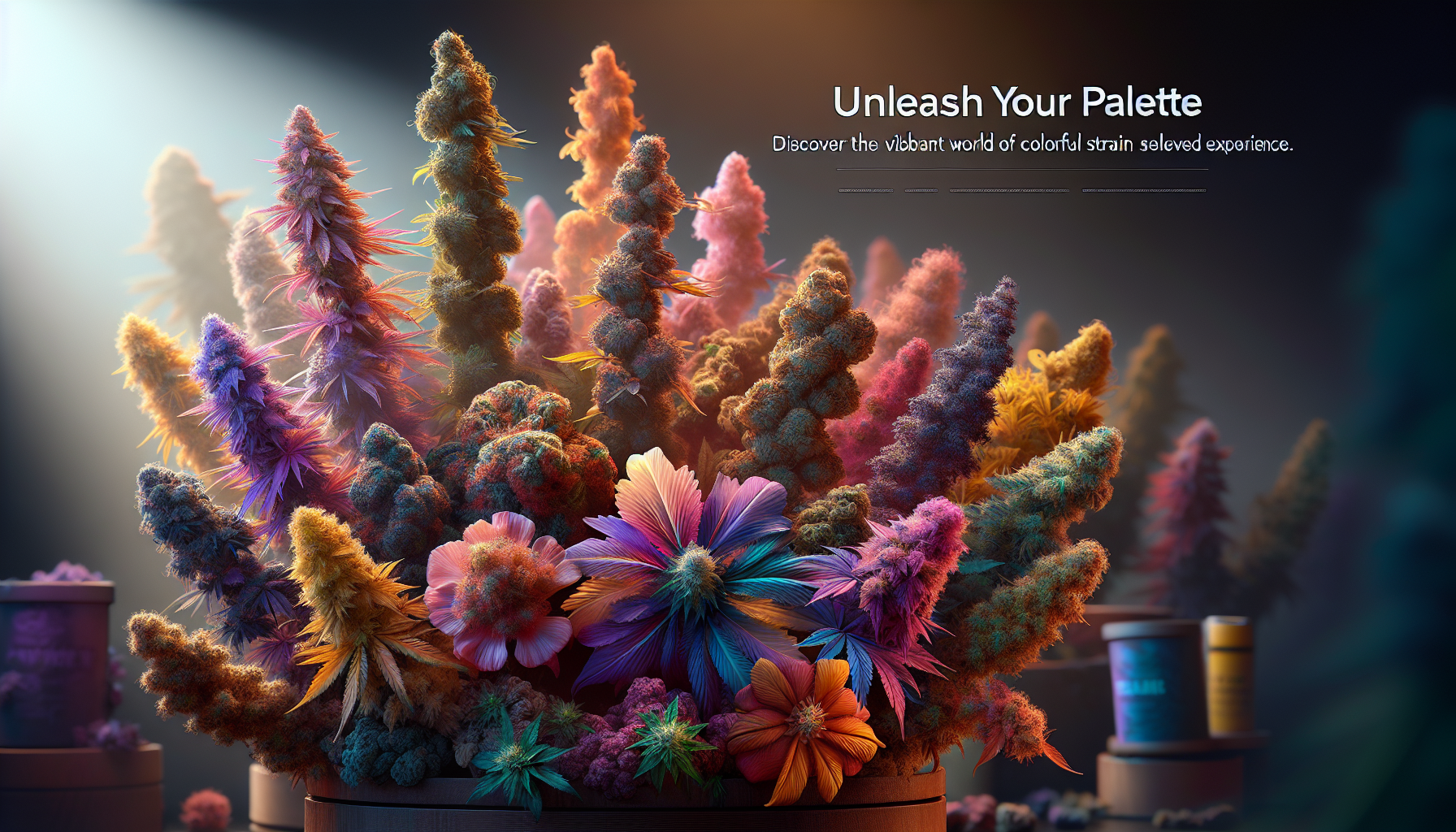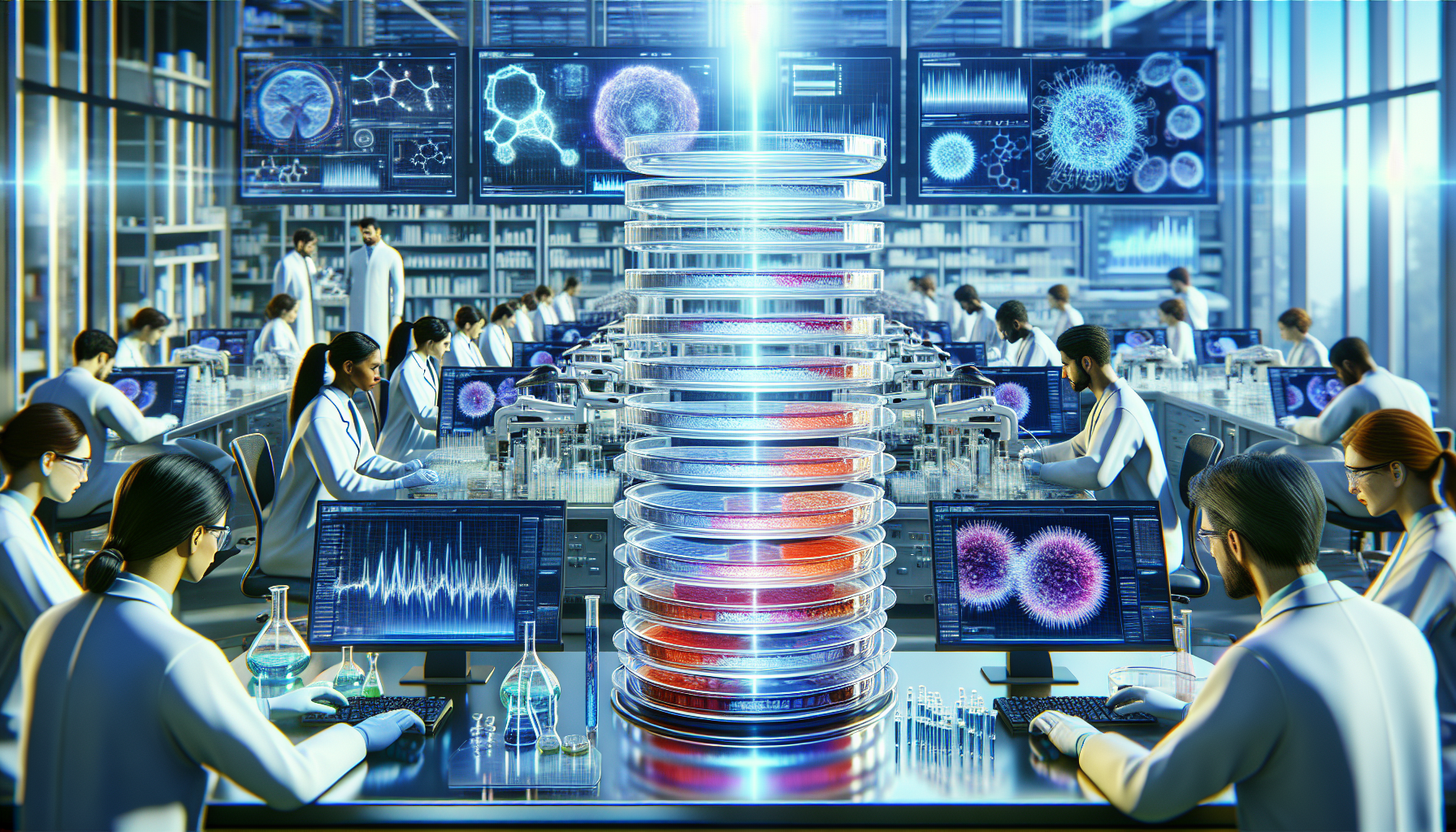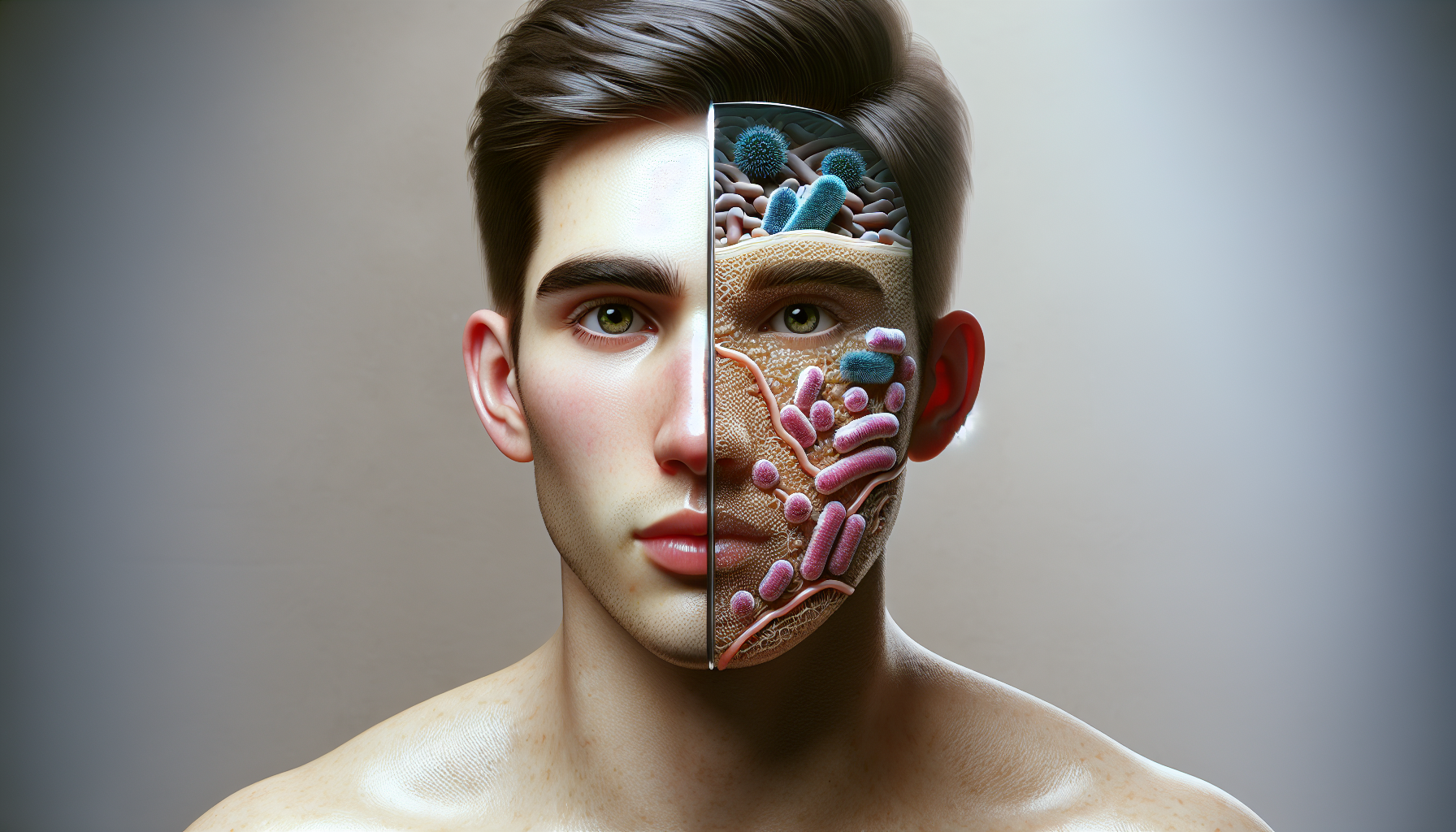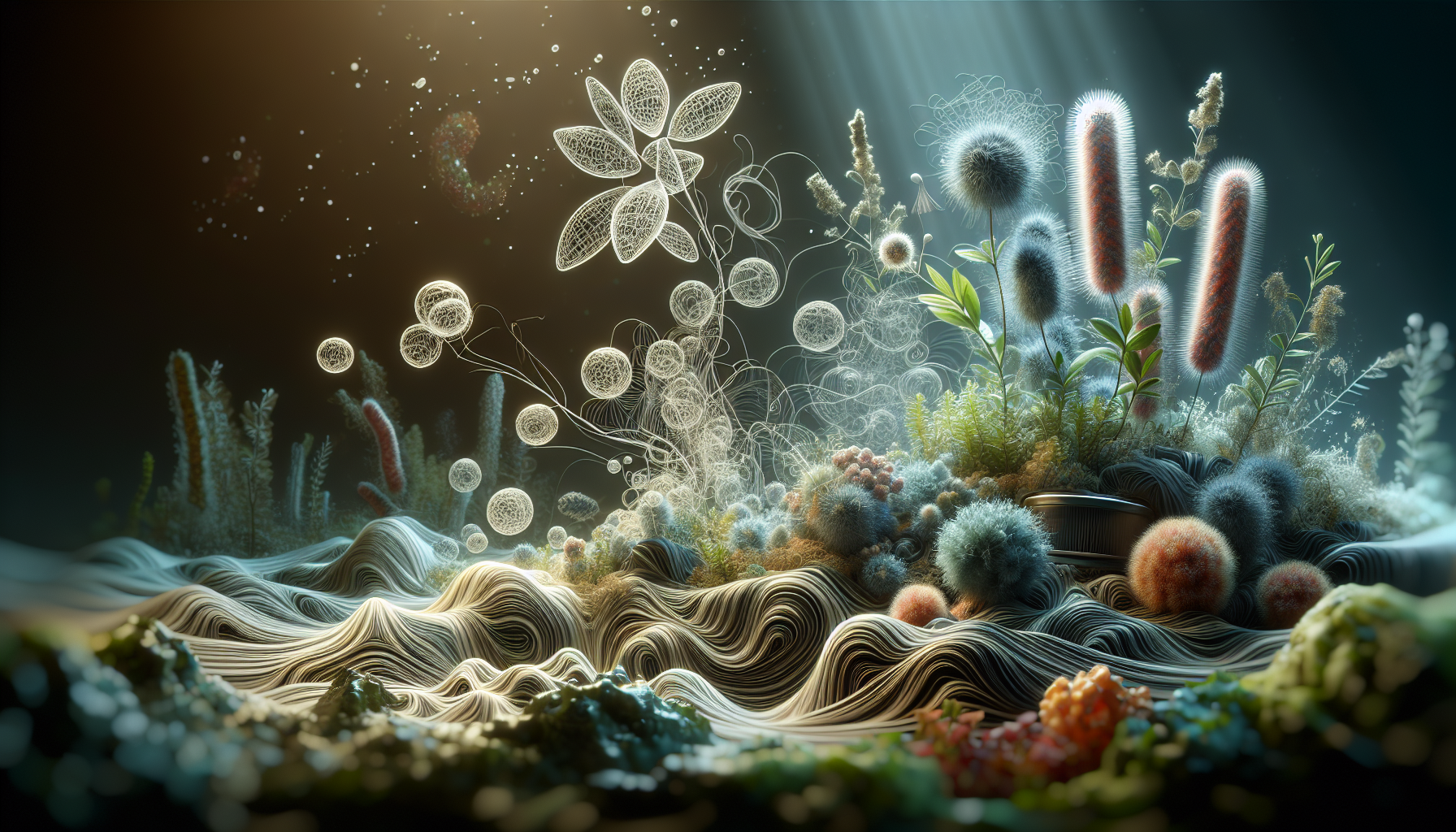In the quiet corners of the natural world, a brilliant phenomenon unfolds, often hidden from the naked eye but now stepping into the spotlight: bioluminescence. This mesmerizing spectacle, where organisms emit their own light, has long captivated scientists and dreamers alike. Today, thanks to groundbreaking innovations in biotechnology and art, this ethereal glow is no longer confined to nature’s secluded realms. Enter the world of glow bacteria canvases—a fusion of science and creativity that promises to illuminate not just canvases, but also our understanding and appreciation of both disciplines. This article invites you to embark on a journey where art and science converge, where glowing bacteria serve as both medium and muse, transforming our perception of artistic expression and the natural wonders that inspire it. ✨
Bioluminescent art is a testament to human ingenuity and curiosity. Imagine entering a dimly lit room and being greeted by a canvas that shimmers with a soft, otherworldly light. The glow is not artificial; it is alive, pulsating gently in hues dictated by the very bacteria that inhabit the canvas. This art form is a celebration of life in its most elemental form, harnessing the power of bioluminescent microorganisms to create pieces that are not only visually stunning but also thought-provoking. At its core, glow bacteria art challenges traditional boundaries, asking us to reconsider the definitions of art and the materials we use to create it. This burgeoning field is an invitation to explore, to question, and to marvel at the possibilities when creativity and biology intertwine.
As we delve deeper into this fascinating realm, we will explore the science that makes glow bacteria canvases possible, uncovering the secrets of the microorganisms that produce light. Understanding the biology behind bioluminescence is crucial to appreciating its application in art. We’ll discuss the specific species of bacteria employed, the conditions necessary for them to thrive, and how their natural luminescence can be harnessed to create lasting and impactful artworks. Moreover, we’ll examine the ethical considerations and sustainability issues surrounding the use of living organisms in art, shedding light on how artists and scientists collaborate to ensure that this innovative practice is both responsible and respectful of the natural world.
Finally, we’ll journey through the history of bioluminescent art and its pioneers, spotlighting the visionaries who first saw the artistic potential of glowing bacteria. Their stories are not just about scientific discovery but also about the passion and perseverance required to push the boundaries of conventional art. Through interviews and case studies, we’ll gain insight into their creative processes, the challenges they faced, and the triumphs they celebrated. By the end of this exploration, you’ll not only understand the technicalities of creating glow bacteria canvases but also appreciate the profound impact they have on the art world and beyond. Whether you’re an artist, a scientist, or simply someone with a curious mind, this is an opportunity to see the world—and art—in a whole new light. 🌟
The Intersection of Art and Science: The Birth of Glow Bacteria Canvases
Art and science have always shared a complex relationship, inspiring and challenging each other to explore new horizons. The emergence of glow bacteria canvases marks an exciting chapter in this ongoing dialogue. This innovative medium blends artistic expression with cutting-edge scientific discovery, opening new avenues for creativity. At its core, glow bacteria art leverages the bioluminescent properties of certain microorganisms to create stunning visual displays. These unique canvases harness the natural glow emitted by bacteria to form images, patterns, and even entire scenes, transforming traditional perceptions of both art and microbiology.
The concept of using bioluminescent bacteria in art was first explored by a small group of visionary scientists and artists who recognized the aesthetic potential of these organisms. Bioluminescence, a phenomenon where living organisms emit light, is most commonly associated with marine life like jellyfish and certain types of plankton. However, bacteria such as Vibrio fischeri and Photobacterium phosphoreum have also been found to possess this captivating ability. By carefully culturing these bacteria on agar plates and manipulating their growth patterns, artists can create canvases that glow in the dark, resulting in dynamic and ephemeral works of art.
Glow bacteria canvases not only offer a novel medium for artistic expression but also raise intriguing questions about the intersection of biology and creativity. The use of living organisms as a medium challenges traditional notions of art as static and unchanging. Instead, these works are dynamic, evolving as the bacteria grow and change over time. This ephemeral quality adds a layer of complexity and depth to the art, inviting viewers to contemplate the impermanence of life and the beauty of the natural world. As more artists and scientists collaborate on these projects, the potential applications of glow bacteria art continue to expand, sparking a renewed interest in the possibilities of bioart.
Understanding the Science Behind Bioluminescent Bacteria
To fully appreciate the innovation of glow bacteria canvases, it’s essential to delve into the science behind bioluminescent bacteria. These microorganisms produce light through a biochemical reaction that involves the enzyme luciferase and a substrate called luciferin. When luciferase catalyzes the oxidation of luciferin, light is emitted as a byproduct. This reaction is remarkably efficient, with almost all of the energy being converted into light, making it an attractive subject of study for both biologists and artists.
The bioluminescence of bacteria like Vibrio fischeri is not just a random trait; it serves important ecological functions. For instance, Vibrio fischeri forms symbiotic relationships with certain marine animals, such as the Hawaiian bobtail squid. The bacteria colonize the squid’s light organ, providing camouflage against predators by mimicking moonlight on the ocean surface. This symbiotic relationship is a prime example of nature’s ingenuity, and it provides artists with a rich source of inspiration for creating works that reflect the interconnectedness of life.
Creating glow bacteria art involves carefully cultivating these organisms in a controlled environment. Artists use agar plates as a canvas, where they can apply specific nutrients and conditions to encourage bacterial growth in desired patterns. The resulting artwork is not static; it evolves as the bacteria grow, move, and interact with each other. This process requires a deep understanding of microbiology, as well as a keen artistic vision, making it a true interdisciplinary endeavor. As artists and scientists continue to explore the potential of bioluminescent bacteria, they are uncovering new ways to manipulate these organisms for artistic purposes, pushing the boundaries of what is possible in bioart.
Applications and Innovations in Glow Bacteria Art
Glow bacteria art has captured the imagination of artists and scientists alike, leading to a myriad of applications and innovations. From educational tools to public art installations, the potential of bioluminescent bacteria is being harnessed in diverse and exciting ways. One of the most compelling aspects of this art form is its ability to engage audiences and inspire curiosity about the natural world. By incorporating living organisms into their work, artists can create dynamic pieces that challenge viewers to reconsider their relationship with the environment and the organisms that inhabit it.
In educational settings, glow bacteria canvases serve as a unique tool for teaching microbiology and the principles of bioluminescence. Students can witness firsthand the growth and behavior of these fascinating organisms, providing a hands-on learning experience that is both engaging and informative. Additionally, these canvases can be used to illustrate concepts such as symbiosis, adaptation, and the role of microbes in ecosystems. This intersection of art and science provides a platform for interdisciplinary learning, encouraging students to explore the connections between seemingly disparate fields.
Public art installations featuring glow bacteria are also gaining popularity, captivating audiences with their otherworldly glow. These installations often incorporate interactive elements, inviting viewers to engage with the art and explore its underlying scientific concepts. By combining aesthetics with education, these installations foster a greater appreciation for the beauty and complexity of the natural world. Moreover, they serve as a testament to the power of collaboration between artists and scientists, demonstrating the potential for innovation when diverse perspectives are brought together.
| Application | Purpose | Example |
|---|---|---|
| Educational Tools | Teaching microbiology and bioluminescence principles | Classroom demonstrations using agar plate canvases |
| Public Art Installations | Engaging audiences and inspiring curiosity | Interactive exhibits in museums and public spaces |
| Scientific Research | Exploring the potential of bioluminescent organisms | Studies on bacterial growth and behavior in art |
For those interested in exploring the world of glow bacteria art further, there are numerous resources available online. From instructional videos to articles and forums, the internet is a treasure trove of information for budding bioartists. To get started, we recommend checking out this YouTube video: Creating Art with Bioluminescent Bacteria – Science Channel. This video provides a comprehensive overview of the process and techniques involved in creating glow bacteria art, making it an excellent starting point for anyone interested in this fascinating field.
Challenges and Considerations in Creating Glow Bacteria Art
Despite the captivating allure of glow bacteria art, creating these works comes with its own set of challenges and considerations. Working with living organisms requires a thorough understanding of microbiology, as well as a meticulous approach to ensure the safety and success of the project. Artists must navigate various technical and ethical issues, including the cultivation and maintenance of bacteria, as well as the potential environmental impact of their work.
One of the primary challenges in creating glow bacteria art is the need for precise environmental control. Bacteria are sensitive to factors such as temperature, humidity, and nutrient availability, all of which can affect their growth and bioluminescence. Artists must carefully monitor and adjust these conditions to ensure the desired outcome. This often involves working in a laboratory setting, where specialized equipment and materials are readily available. However, this requirement can also limit accessibility, as not everyone has access to the necessary resources.
Ethical considerations are another important aspect of working with living organisms in art. Artists must consider the welfare of the bacteria and ensure that their work does not have adverse effects on the environment. This includes proper disposal of biological materials and adherence to biosafety guidelines. By taking these factors into account, artists can create glow bacteria art that is both visually stunning and environmentally responsible. As the field of bioart continues to grow, it is essential for artists to remain informed and conscientious about the implications of their work, ensuring that their creations contribute positively to both the art world and the scientific community.
- Understand the principles of bioluminescence and microbiology.
- Utilize laboratory equipment and resources for precise environmental control.
- Adhere to ethical and biosafety guidelines in all aspects of the project.
- Engage in interdisciplinary collaboration to enhance creativity and innovation.
In summary, glow bacteria canvases represent a fascinating intersection of art and science, offering new possibilities for creative expression and exploration. By embracing the challenges and opportunities presented by this medium, artists and scientists alike can continue to push the boundaries of what is possible, inspiring audiences and fostering a deeper appreciation for the natural world. Whether used as educational tools, public art installations, or a means of scientific inquiry, glow bacteria art holds the potential to illuminate not only our surroundings but also our understanding of the interconnectedness of life.
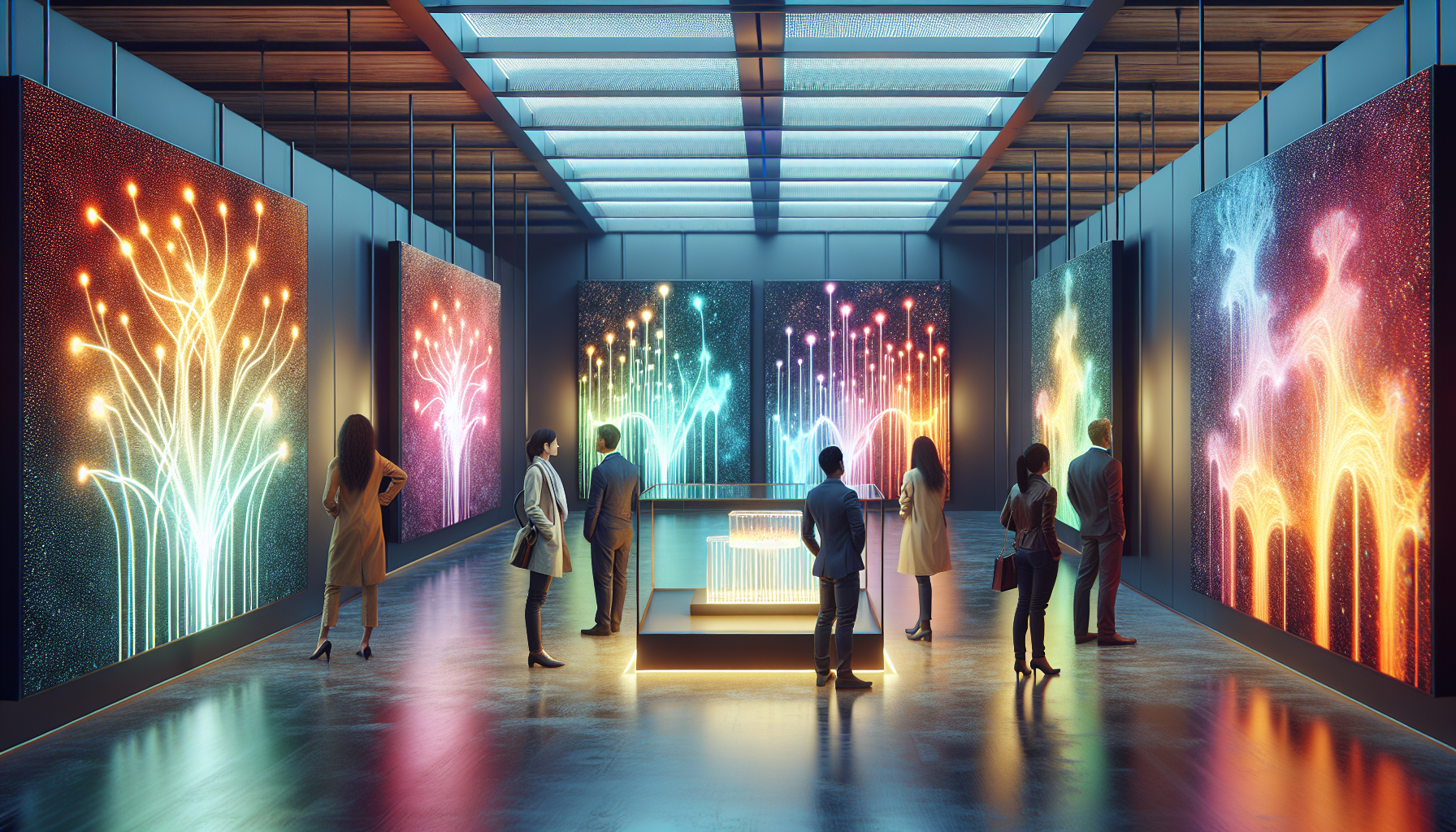
Conclusion
Certainly! Here’s a comprehensive conclusion for your article on “Illuminate Your World with Glow Bacteria Canvases: Artistic Innovation at Your Fingertips”:
—
As we draw the curtains on our exploration of the fascinating world of glow bacteria canvases, it is crucial to recapitulate the central tenets of this artistic innovation. At the intersection of art and science, these luminous canvases symbolize a new era of creativity, where biological elements serve as the brushstrokes of modern masterpieces. By harnessing the natural luminescence of bacteria, artists are able to create pieces that not only dazzle visually but also provoke thought and inspire curiosity about the living world.
Throughout the article, we have delved into the science behind bioluminescence, exploring how certain bacteria emit light through chemical reactions. This natural phenomenon, once confined to the depths of the ocean and other secluded environments, has been brought into the realm of human creativity, offering artists an unprecedented medium to express their visions. The ability to manipulate and design with living organisms opens up a plethora of possibilities, challenging traditional notions of what constitutes art.
One of the most significant points discussed is the sustainability aspect of glow bacteria canvases. In an era where environmental consciousness is paramount, utilizing biological materials that are biodegradable and require minimal energy to produce aligns with global efforts to reduce ecological footprints. This innovative approach not only captivates the imagination but also serves as a testament to the potential for sustainable artistic practices. 🌍
Moreover, we have examined the technical aspects and the accessibility of this medium. The process of creating glow bacteria canvases is surprisingly straightforward, making it accessible to both seasoned artists and enthusiastic beginners. The democratization of this technology means that anyone with a passion for art and science can experiment and contribute to this burgeoning field. Educational institutions and workshops are increasingly incorporating this medium into their curriculums, fostering a new generation of artists who are as comfortable in a laboratory as they are in a studio.
Importantly, the aesthetic appeal of these artworks cannot be overstated. The ethereal glow emitted by the bacteria creates an ever-changing visual experience, one that evolves over time as the living organisms respond to their environment. This dynamic quality imbues each piece with a sense of life and movement, captivating audiences and inviting them to reflect on the transient nature of existence.
Furthermore, the implications of this innovation extend beyond the art world. The principles and techniques developed through the creation of glow bacteria canvases have potential applications in various fields, including biotechnology, education, and environmental science. By engaging with this medium, individuals can gain insights into microbial life and the broader ecosystem, fostering a deeper understanding of our interconnectedness with the natural world.
The impact of glow bacteria canvases also resonates on a cultural level. In a world where technology often alienates us from organic processes, this art form serves as a bridge, reconnecting us with the intrinsic beauty and complexity of biological systems. It challenges us to reconsider our relationship with nature and to appreciate the artistry inherent in life itself.
As we conclude, it is essential to acknowledge the pioneering artists and scientists who have contributed to the development of glow bacteria canvases. Their work exemplifies the power of interdisciplinary collaboration and the endless possibilities that arise when creativity and innovation intersect. Their contributions not only enrich the art world but also inspire us to think differently about the materials and methods we employ in our creative endeavors.
We encourage you, dear reader, to engage with this captivating art form. Whether by visiting exhibitions, participating in workshops, or experimenting with your own creations, there are myriad ways to immerse yourself in the world of glow bacteria canvases. Share your experiences, insights, and creations with your community to spark conversations and inspire others to explore this unique fusion of art and science. 🎨✨
In conclusion, glow bacteria canvases represent more than just a novel artistic medium; they embody a paradigm shift in how we perceive and interact with both art and the natural world. As we continue to explore the boundaries of creativity, let us embrace the possibilities offered by bioluminescence and other natural phenomena. Together, we can illuminate the world with our ideas, our art, and our shared commitment to innovation and sustainability.
For further exploration, consider visiting resources like Bioluminescent Art or Art and Science Collaborations, Inc. (ASCI). These platforms provide a wealth of information and inspiration for anyone interested in the intersection of art and science.
Feel free to comment, share, and discuss the insights from this article. Your engagement is invaluable in driving the conversation forward and in fostering a community that celebrates creativity in all its forms. 🌟
—
Please verify the links for accuracy and relevance as they serve as placeholders.
Toni Santos is a visual explorer and microscopic storyteller who delves into the hidden aesthetics of microbial life. Through a fusion of scientific curiosity and artistic insight, Toni transforms the overlooked world of bacteria, fungi, and cellular forms into mesmerizing visual narratives—revealing the elegance, symmetry, and chaos that thrive at microscopic scales.
Rooted in a fascination with life forms too small to see yet too intricate to ignore, Toni’s work captures the bizarre beauty of microbial colonies, biofilms, and spore patterns. These images aren’t just representations—they are celebrations of the artistic intelligence encoded in nature’s tiniest architects.
With a background in visual design and bio-inspiration, Toni merges scientific imaging techniques with creative expression, transforming petri dish cultures, fluorescence microscopy, and microbial textures into works that provoke both wonder and contemplation.
As the creative force behind Vizovex, Toni offers curated visual studies, microbial-inspired designs, and essays that bridge art and microbiology—inviting viewers to reimagine what beauty means at the edge of perception.
His work is a tribute to:
The hidden geometries of living systems
The surprising elegance of microbial growth
The role of micro-life in shaping visual culture
Whether you’re a scientist, artist, or simply curious about the unseen world that sustains us, Toni opens a window into a universe where life writes poetry in colonies and patterns, one microbe, one frame, one breathtaking detail at a time.


